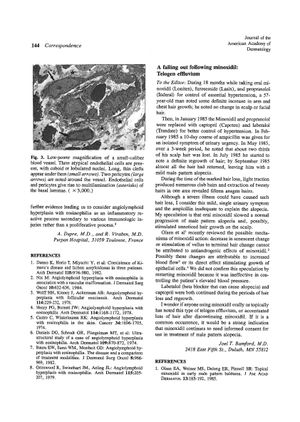A Falling Out Following Minoxidil: Telogen Effluvium
January 1987
in “
Journal of The American Academy of Dermatology
”

TLDR A man lost a lot of scalp hair quickly after stopping minoxidil, but it grew back with mild male pattern baldness.
In 1987, a case was reported of a 57-year-old man who experienced a significant increase in arm and chest hair growth during 18 months of oral minoxidil treatment for hypertension, without changes in scalp or facial hair. After switching from minoxidil to other hypertension medications, he lost about two-thirds of his scalp hair over a 3-week period, which then regrew within a few months, leaving him with mild male pattern alopecia. The author speculated that oral minoxidil might have slowed the progression of male pattern alopecia and possibly stimulated unnoticed scalp hair growth. The sudden hair loss, termed telogen effluvium, was not attributed to severe illness or the other medications, which included a beta blocker known to cause alopecia. The author questioned whether this type of hair loss after discontinuing minoxidil was common and suggested the need for informed consent when using minoxidil for male pattern alopecia treatment.






